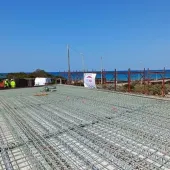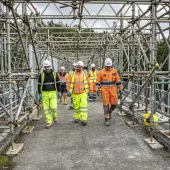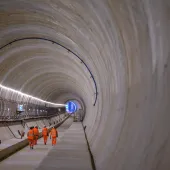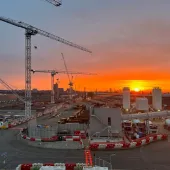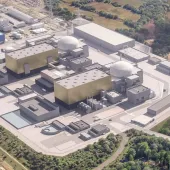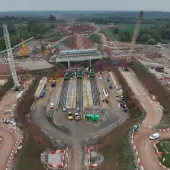Chiltern Tunnel construction completed on HS2
The 16-km Chiltern Tunnel, the longest tunnel on the HS2 route, is now structurally complete, joint venture contractor Align has confirmed.
In a LinkedIn post published last week, Align JV – made up of Bouygues Travaux Publics, Sir Robert McAlpine and VolkerFitzpatrick – announced the successful completion of the twin-bore tunnel, as well as the porous portal structures and extensive earthworks at the South Portal near the M25 in Hertfordshire.
Construction began in 2020, with tunnel boring machines (TBMs) Florence and Cecilia launched from the South Portal in spring and summer 2021. The two 2,000-tonne machines completed their respective 16.04 km drives under the Chiltern Hills in early 2024, breaking through at the North Portal near South Heath, Buckinghamshire.
Since then, teams have completed secondary works including:
- 38 cross passages and 5 adits between the tunnel bores
- Slip-formed emergency walkways
- Removal of TBM services and slurry pipework
- Installation of crossover slabs and track drainage infrastructure
- Final works on the south portal’s distinctive porous portal structures
The tunnel comprises more than 112,000 precast concrete segments, each weighing around 7 tonnes and manufactured using steel fibre reinforcement and low-carbon concrete mixes incorporating up to 40% GGBS.
Built beneath the Chilterns Area of Outstanding Natural Beauty, the tunnel was designed to reduce environmental disruption. Excavated chalk is being reused to form a 127-hectare chalk grassland habitat adjacent to the south portal site.
“The Chiltern Tunnel has been an extraordinary engineering challenge,” said a statement from Align. “Over five years of civil works have included innovations, awards, record-breaking drives and historic milestones – all delivered through a fully integrated project team.”
The tunnel will carry HS2 trains between London and the Midlands at speeds of up to 320 km/h once the route opens. It is one of the largest tunnelling elements in UK rail history, both in terms of scale and volume of concrete used.


